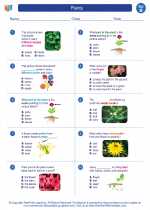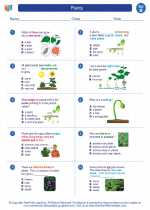Large Intestine
The large intestine, also known as the colon, is the final part of the digestive system. It is a tube-like organ that is responsible for absorbing water and electrolytes from undigested food matter and forming feces for elimination from the body.
Anatomy of the Large Intestine
The large intestine is approximately 5 feet long and consists of several parts, including the cecum, ascending colon, transverse colon, descending colon, sigmoid colon, and rectum. The main function of the large intestine is to remove water from the undigested food residue and to store and eliminate waste products from the body.
Functions of the Large Intestine
The major functions of the large intestine include:
- Reabsorption of water and electrolytes from undigested food
- Formation and storage of feces
- Elimination of waste products from the body
Key Concepts to Remember
When studying the large intestine, it is important to remember the following key concepts:
- The large intestine is the final part of the digestive system
- It is responsible for absorbing water and electrolytes from undigested food matter
- The main parts of the large intestine are the cecum, colon, and rectum
- Its primary function is to form and store feces for elimination
Study Guide Questions
- What is the main function of the large intestine?
- What are the main parts of the large intestine?
- How does the large intestine contribute to the digestive process?
- What happens to undigested food matter in the large intestine?
- How does the large intestine form and eliminate feces from the body?
[Large Intestine] Related Worksheets and Study Guides:
.◂Science Worksheets and Study Guides Second Grade. Plants
Study Guide Plants
Plants  Activity Lesson
Activity Lesson All About Plants
All About Plants  Activity Lesson
Activity Lesson All About Plants
All About Plants  Worksheet/Answer key
Worksheet/Answer key Plants
Plants  Worksheet/Answer key
Worksheet/Answer key Plants
Plants  Worksheet/Answer key
Worksheet/Answer key Plants
Plants  Worksheet/Answer key
Worksheet/Answer key All About Plants
All About Plants  Vocabulary/Answer key
Vocabulary/Answer key Plants
Plants  Vocabulary/Answer key
Vocabulary/Answer key Plants
Plants 

 Activity Lesson
Activity Lesson
 Activity Lesson
Activity Lesson
 Worksheet/Answer key
Worksheet/Answer key
 Worksheet/Answer key
Worksheet/Answer key
 Worksheet/Answer key
Worksheet/Answer key
 Worksheet/Answer key
Worksheet/Answer key
 Vocabulary/Answer key
Vocabulary/Answer key
 Vocabulary/Answer key
Vocabulary/Answer key

The resources above cover the following skills:
Concepts of Life Science (SC1, SC2, SC3)
The student demonstrates an understanding of the structure, function, behavior, development, life cycles, and diversity of living organisms by observing and comparing external features of plants and of animals that may help them grow, survive, and reproduce.